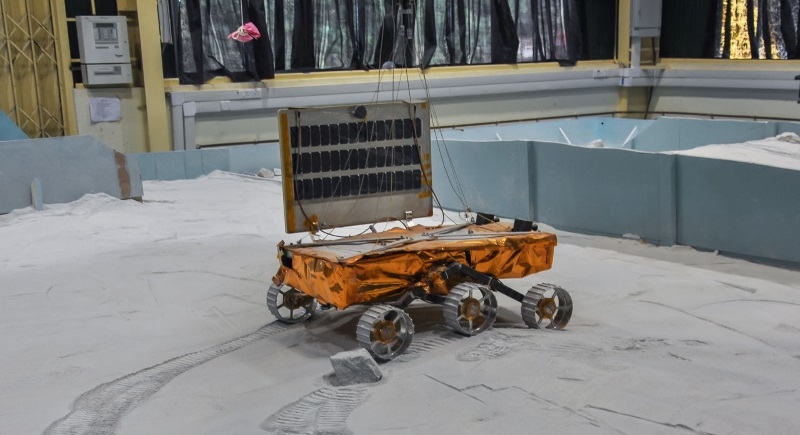Intellectual collaboration for better future, India’s Chandrayaan 2 to carry NASA’s laser instrument to Moon

Bengaluru, Mar 25: ISRO is one of the most leading and advanced space agency in the world. ISRO’s ‘Chandrayaan 2’ is one of the most ambitious projects of the agency which is scheduled for launch in April.
Chandrayaan-2 is second mission to the Moon is a totally indigenous mission comprising of an Orbiter, Lander and Rover will carry American agency NASA’s laser retroreflector arrays that allow scientists to make precise measurements of the distance of the moon.
NASA statement stated, India's lunar mission Chandrayaan-2, scheduled for launch in April, will carry NASA's laser instruments that allow scientists to make precise measurements of the distance to the Moon.
Lori Glaze, acting director of the Planetary Science Division of NASA said, "We're trying to populate the entire surface with as many laser reflector arrays as we can possibly get there".
During the Lunar and Planetary Science Conference held at Texas, the US last week, NASA confirmed that Chandrayaan-2 will carry NASA-owned laser retroreflector arrays. Besides India's spacecraft, the science instruments will also be flying to the Moon aboard the Israeli lander Beresheet, due to touch down April 11.
Retroreflectors are sophisticated mirrors, that reflect laser light signals sent from the Earth. The signals can help pinpoint precisely where the lander is, which scientists can use to precisely calculate the Moon's distance from Earth. Five such instruments exist on the lunar surface but they have some flaws, according to Simone Dell'Agnello, a physicist at the National Institute for Nuclear Physics National Laboratory at Italy.
"The existing reflectors are big ones," said Dell'Agnello adding that individual reflectors instead of arrays, would waste fewer laser pulses and allow more-precise measurements of the moon's surface.
Let’s know more about Chandrayaan-2 –
1. The 3,890-kg Chandrayaan-2 spacecraft, to be launched onboard the Geosynchronous Satellite Launch Vehicle (GSLV) Mk-3, will orbit around the Moon to study its conditions and collect data of its topography, mineralogy, and exosphere.
2. The Rs 800-crore Chandrayaan-2 mission comes a decade after the maiden mission Chandrayaan-1 was launched on October 22, 2008, from India's spaceport at Sriharikota in Andhra Pradesh.
3. The lander has been named 'Vikram' as a tribute to the pioneer of India's space programme and former ISRO chairman (1963-71) Vikram Sarabhai.
4. When Chandrayaan-2's rover lands on the Moon, India will become the fifth country in the world to achieve the feat after the Soviet Union in 1959, the US in 1969, China in December 2013, and Israel in 2019.